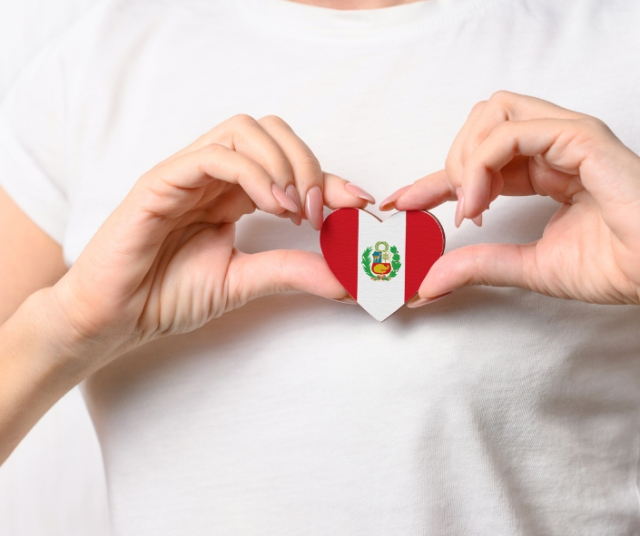The history of Peru is marked by a crucial chapter that changed the course of its destiny: its independence. This event, which took place in the 19th century, was a tumultuous and challenging process that ultimately led to the country's liberation from Spanish rule. The Independence of Peru not only meant the break with the colonial yoke, but also laid the foundations for the construction of a sovereign and free nation.
To fully understand Peru's independence process, it is crucial to examine the historical context in which it developed. Since the arrival of the Spanish conquistadors in the 16th century, Peru was under the control of the Spanish Empire for more than three centuries. During this time, the Spanish imposed their authority, exploited natural resources and subjected the indigenous population to a regime of oppression and servitude.
Despite Spanish domination, there were several factors that contributed to the growth of discontent and the desire for independence in Peruvian territory. The European Enlightenment brought with it ideas of freedom, equality and human rights that began to resonate in the minds of Peruvian intellectuals. Furthermore, the Napoleonic Wars in Europe weakened Spanish authority in Latin America, creating an environment ripe for rebellion.
The First Independence Movements
The first attempts at independence in Peru date back to the late 18th and early 19th centuries. Figures such as Túpac Amaru II, an indigenous leader descended from the Incas, led revolts against Spanish rule in the 1780s and 1781. Although these rebellions were brutally repressed by colonial authorities, they sowed the seeds of nationalism and resistance in Peruvian society. .
However, it was at the beginning of the 19th century that independence movements gained significant momentum. In 1808, Napoleon Bonaparte invaded Spain and placed his brother Joseph on the Spanish throne, triggering a political crisis in the empire. This led to the formation of governing boards in Latin America, which declared their loyalty to the deposed King Ferdinand VII and disregarded the authority of the Spanish authorities in America.
The Role of Independence Leaders
The Role of the Independence Leaders was fundamental in the process of liberating Peru from Spanish rule. From the beginning of the independence movements at the end of the 18th century until the culmination of the war for independence in the 19th century, these leaders played diverse but complementary roles that were essential to the success of the liberation enterprise.
José de San Martín, with his military experience and strategic vision, was one of the main architects of Peruvian independence. He arrived on Peruvian shores in 1820 with a meticulously crafted plan to liberate the country from Spanish rule. San Martín understood the importance of unity among patriot forces and sought to establish alliances with local and foreign leaders, including Simón Bolívar, to consolidate the independence struggle.
The figure of Simón Bolívar was also crucial in the independence process of Peru. Although his direct role in the country's liberation was less prominent than that of San Martín, his ideological influence and leadership in other regions of Latin America inspired and strengthened the independence cause in Peru. In addition to San Martín and Bolívar, other local leaders played key roles in the resistance against Spanish rule. Figures such as José Faustino Sánchez Carrión, Francisco de Paula González Vigil and Mateo Pumacahua, among others, led popular movements and organized resistance at the local level, thus contributing to the collective effort for independence.
The role of these leaders was not limited only to the military; They also performed fundamental political, diplomatic and intellectual functions. They promoted unity among the various ethnic and social groups of Peruvian society, fostered nationalist sentiment and fought for the creation of democratic institutions that guaranteed freedom and equality for all citizens.
The Liberation Campaign and the Battle of Ayacucho
The liberation campaign led by San Martín was a decisive milestone in the fight for Peru's independence. With the support of local and foreign patriot forces, San Martín fought a series of battles that culminated in the historic Battle of Ayacucho in 1824.
The Battle of Ayacucho, which took place in the southern highlands of Peru, was the final confrontation between patriot forces and Spanish royalist forces. Under the command of General Antonio José de Sucre, independence troops achieved a decisive victory that sealed the destiny of Peru as a free and independent nation.
The Consequences of Independence
The Independence of Peru had profound implications both nationally and regionally. At the national level, it marked the end of Spanish rule and the beginning of a period of sovereign nation building. However, the process of consolidating power and creating democratic institutions faced numerous challenges, including the struggle for power between different political factions and resistance from Creole elites.
At the regional level, Peru's independence inspired similar movements in other Latin American countries. The liberation of Peru and its role as the scene of important independence battles contributed to the sense of solidarity and unity among Latin American nations in their fight against European imperialism.
Two centuries after independence, his legacy remains relevant to Peruvian identity. The celebration of Independence Day on July 28 is an occasion to commemorate the bravery and sacrifice of those who fought for the country's freedom. Furthermore, the figure of José de San Martín and other independence leaders continues to be revered as national heroes whose courage and vision helped shape the nation's destiny.
